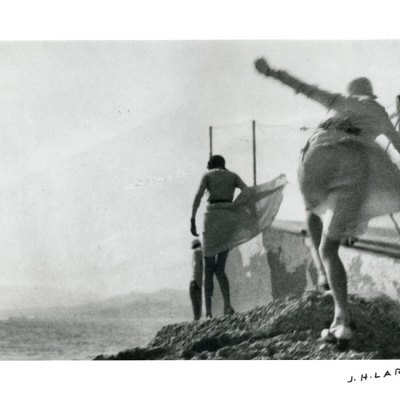After an intensive weekend looking at architecture in and around Bordeaux, nipping down to San Sebastián, one of the two European Capitals of Culture 2016, seemed a good idea. But trains between France and Spain are not that synchronised, something to do with incompatible gauges. And Monday is not an ideal day to start exploring a European city.
Fortunately Donostia (the Basque name for San Sebastián), is very serious about its 2016 status. Since the project began in 1985, dreamed up by that illustrious pair of cultural heavies, Melina Mercouri from Greece and Jack Lang from France, more than 50 cities have been chosen for the accolade, frequently smaller towns of marked character and regional distinctiveness. In the case of Donostia/San Sebastián, the exercise emphasises the proud revival of Basque regional culture after a long period of darkness in the 20th century.
The bids have to be submitted six years ahead and, once chosen, the winners have four years to prepare and round up the considerable funding required, alongside the carrot of the annual €1.5 million Melina Mercouri Prize offered by the EU’s Creative Europe programme. Much is made of exchanges between cities – the other European Capital of Culture this year is Wrocław, in western Poland. One of various joint celebrations involves installations on their bridges, since San Sebastián is as much a city on a river as by the sea. Rather than offering an empty parade of signature buildings, the kind of ostentatious display that often leaves a sour aftertaste in Olympic locations, each European Capital of Culture aims to offer a sense of what defines it and a sense of particular pride.
The former Dominican convent of San Telmo, now the Museum of Basque Society and Citizenship, showing The Altar of Race (1929–34), one of 11 canvases by José María Sert

For example, the recently renovated and extended museum of San Telmo, centred on and around the cloister and church of that name, is the Museum of Basque Society and Citizenship. In the church a compelling series of 11 heroic canvases, coloured with varnishes laid on a metallic background, were commissioned in 1929 from the Barcelona-born José María Sert to express the essence of Basque culture, the aspirations, occupations, and religion in the lives of the people. The extent and ambition of the displays throughout the entire museum point, justifiably enough, to cultural autonomy.
Oddly, given the city’s current status, in the new Wallpaper* City Guide to Bilbao/San Sebastián, which I was sent for review, the city after the slash is hardly to be found in its pages; San Sebastían apparently offers scant pickings in terms of design-led emporia or exciting recent architecture and rates but a handful of mentions. San Sebastián’s charm lies in the lazy arc of its sandy bay set off by a handful of exuberant 1900s beach pavilions, each barnacled with suitably marine motifs. Beyond is a proud turreted city hall fronting the old town where almost every doorway gives a glimpse of a bar top laden with pintxos – the regional variant of tapas on which the city’s gastronomic renown has been built.
New architecture in the city is essentially low key. The modest Diocesan Museum of the church of Santa María del Coro offers a discreet display of treasures from many parishes in the area, housed in a nave just off the east end. It is the work of Rafael Moneo and Pedro Elcuaz, who also set a translucent Eduardo Chillida piece at the heart of the building. The museum opened in March this year but my guidebook found space only for Moneo’s rocky 1999 Kursaal, a pair of huge wedge-shaped, slightly translucent blocks overlooking the surfing beach.
Just one large new space has been added to the city for 2016. The Tabakalera, a former tobacco factory near the railway and bus stations, has been hollowed out around a four-floor atrium to offer a range of arts-related spaces and offices. An extra storey offers a wrap-around viewing floor and (yet to open) rooftop restaurant. The building is huge and feels distinctly under-used, mounting a challenge – even in 2016 – to fill it with enough exhibitions and events. But it is there for the long term rather than being an architectural firework to feed fickle appetites. The European Capital of Culture programme is designed as an investment in the future for those cities, and regions, that have found themselves consigned to the outskirts of Europe for far too long. Donostia/San Sebastián has met the challenge of coming out of the shadows without losing its amour propre in the process.
From the July/August issue of Apollo: preview and subscribe here.



